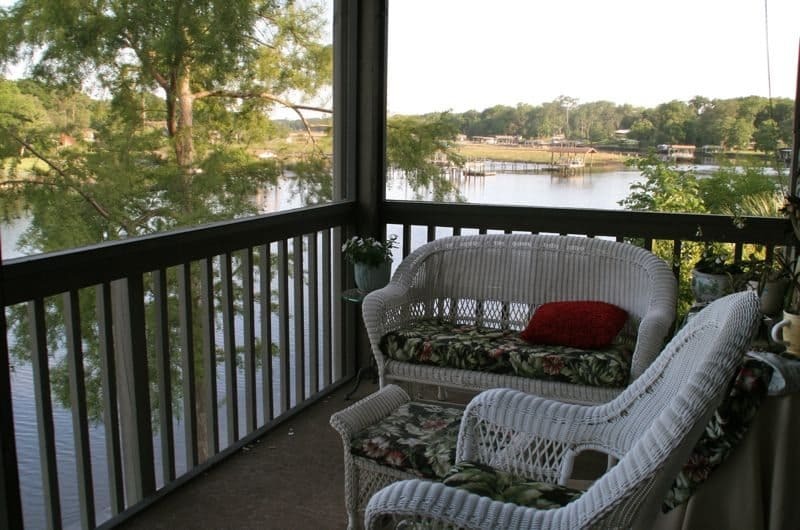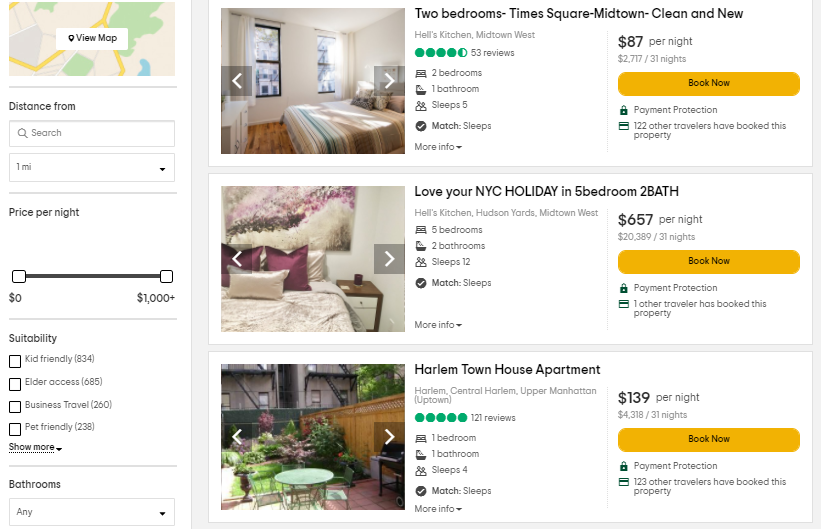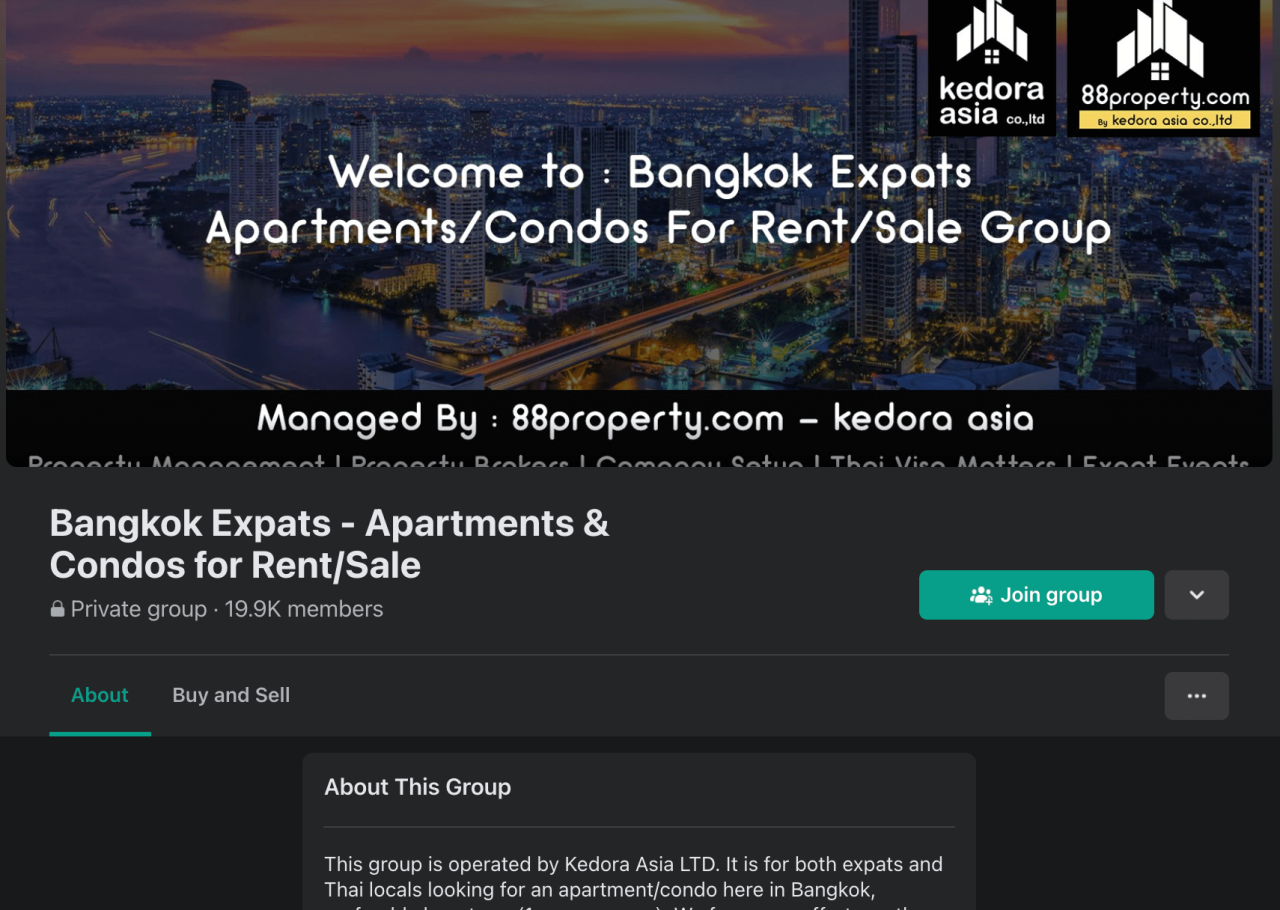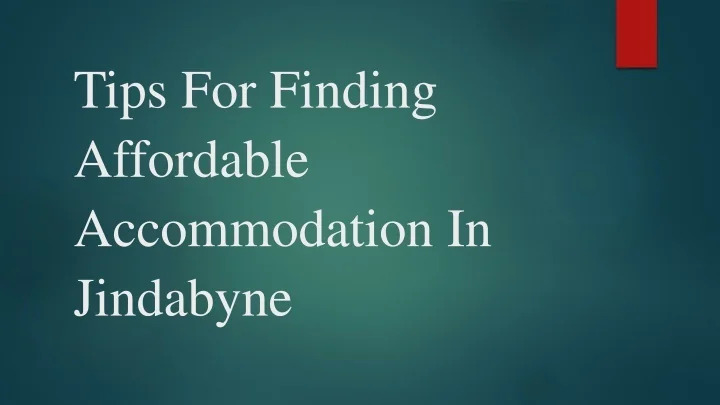Finding affordable long-term accommodation can be a daunting task, but with careful planning and research, it’s achievable. This guide provides a comprehensive overview of various options, from traditional rentals to alternative arrangements, helping you navigate the process effectively and confidently.
This detailed guide covers everything from understanding different housing types and budget-friendly locations to researching listings, negotiating terms, and maintaining a positive landlord relationship. We also explore alternative accommodation strategies to suit various needs and budgets.
Understanding Affordable Accommodation Options

Finding affordable long-term housing can be challenging, but various options exist. Careful consideration of factors like location, amenities, and community can help individuals secure suitable accommodations that align with their needs and budget. This section delves into the diverse range of affordable long-term housing, from shared apartments to temporary solutions.
Different Types of Affordable Housing
A variety of options exist for finding affordable long-term housing. Each type presents unique advantages and disadvantages regarding cost, location, amenities, and community.
- Shared Apartments: Shared apartments often represent a cost-effective way to secure accommodation. These arrangements typically involve splitting rent and utilities among multiple individuals, significantly reducing the burden on each person. The shared space can foster a sense of community and offer a more social environment compared to living alone. However, the shared nature means less privacy and potential conflicts regarding household rules and schedules.
The quality of shared amenities can vary widely, affecting overall comfort and convenience.
- Rooms for Rent: Renting a room within a private residence provides a degree of privacy not always found in shared apartments. This option can be more affordable than renting an entire apartment, but the level of privacy and amenities depend on the host’s provisions. Interactions with the host and other housemates can influence the living environment and create potential challenges.
- Student Accommodations: Student housing often presents affordable options, especially during the academic year. These accommodations frequently come with amenities like laundry facilities and communal spaces, potentially fostering a strong sense of community. Availability can be limited and subject to specific eligibility requirements. Location can be confined to areas surrounding educational institutions, which might not always suit everyone’s preferences.
- Temporary Housing: Temporary housing options, such as furnished apartments or sublets, can be valuable during transitional periods. These options often come with shorter-term rental agreements, providing flexibility while finding permanent housing. The lack of long-term commitments can be advantageous, but the amenities and community aspect may not be as robust as other options.
Short-Term vs. Long-Term Rental Agreements
Understanding the differences between short-term and long-term rental agreements is crucial. Short-term agreements usually last for a few months, while long-term agreements are for a year or more. Legal implications and responsibilities differ significantly.
- Legal Aspects: Long-term agreements typically require more detailed legal documentation, including lease agreements outlining responsibilities and penalties. Short-term agreements might involve less formal arrangements, potentially leading to ambiguities regarding rights and obligations.
- Responsibilities: Long-term tenants usually have a more extensive range of responsibilities, such as maintaining the property and paying utilities. Short-term agreements may involve fewer responsibilities and shorter notice periods for lease termination.
Affordable Housing Programs
Various initiatives aim to address the need for affordable housing. These programs often provide financial assistance or subsidized housing options.
- Public Housing Programs: Many localities offer public housing programs providing subsidized housing to low-income individuals and families. These programs can offer long-term housing solutions with supportive services.
- Section 8 Housing Vouchers: These vouchers enable eligible individuals to pay a portion of their rent and cover the rest with government assistance, opening up options in the private market. These vouchers can be valuable in finding housing outside of specific public housing programs.
- Local Initiatives: Numerous communities have developed local initiatives to support affordable housing, such as creating affordable housing developments or providing rental assistance.
Rental Cost Comparison (New York City)
The table below provides a general comparison of rental costs for different accommodation types in New York City. Actual costs can vary considerably based on specific location and amenities.
| Accommodation Type | Approximate Monthly Rent (USD) |
|---|---|
| Shared Apartment (Studio) | $1,500 – $2,500 |
| Room for Rent (Private) | $1,000 – $2,000 |
| Student Accommodation (Shared Dorm) | $800 – $1,800 |
| Temporary Housing (Furnished Apartment) | $2,000 – $4,000 |
Identifying Budget-Friendly Locations
Finding affordable long-term accommodation often involves strategic location choices. Considering factors like transportation, amenities, and proximity to work or study can significantly impact your overall living expenses. By exploring less central, but still convenient, areas, you can often find substantial savings without sacrificing essential amenities.Lower living costs in certain areas offer substantial benefits. For example, a budget-friendly location might have lower rent, utility costs, and even grocery prices compared to more expensive areas.
These savings can free up funds for other important expenses or create opportunities for additional leisure activities.
Key Factors for Choosing Budget-Friendly Locations
Several key factors influence the affordability and desirability of a location. Careful consideration of these factors is crucial for long-term satisfaction and financial well-being. Transportation costs, access to amenities, and proximity to work or study are essential considerations. Choosing a location with good public transportation or the option of biking or walking to work can significantly reduce transportation expenses.
Adequate access to grocery stores, parks, healthcare facilities, and other necessities will make your daily life more convenient and less stressful.
Benefits of Lower Living Cost Areas
Living in areas with lower living costs compared to more expensive areas offers numerous advantages. These areas often provide significant savings on rent, utilities, and groceries. These savings can be reinvested in other aspects of life, such as personal development, leisure activities, or debt reduction. Lower living costs can also improve overall financial well-being and create a more comfortable lifestyle.
For example, a family relocating to a lower-cost area might find their budget stretches further, allowing them to save more for their children’s education or pursue other important goals.
Strategies for Finding Affordable Accommodation in Desirable Locations
Exploring less-centralized neighborhoods can yield surprisingly affordable housing options while maintaining access to desirable amenities. These neighborhoods often have a slower pace of life and a different atmosphere than more densely populated areas. Using online resources to research local amenities, public transportation, and nearby employment opportunities can help determine if the location suits your needs.
Online Resources for Researching Affordable Neighborhoods and Housing Options
Numerous online resources can aid in the search for affordable neighborhoods and housing options. These resources can provide valuable information about local housing markets, transportation networks, and amenities. Websites dedicated to real estate listings, neighborhood reviews, and local news can offer insights into the cost of living and the quality of life in specific areas. Social media groups and forums dedicated to specific neighborhoods can also offer valuable insights and recommendations.
Budget-Friendly Location Table Example
| Criteria | Location A | Location B | Location C |
|---|---|---|---|
| Proximity to Work/Study | Moderate (15-minute commute by bus) | High (walking distance) | Low (30-minute commute by car) |
| Amenities | Limited (one grocery store, few restaurants) | Excellent (multiple grocery stores, diverse dining options, parks) | Good (one grocery store, few cafes) |
| Estimated Rent | $1,000-$1,200 | $1,400-$1,600 | $800-$1,000 |
Note: This table provides a sample comparison. Specific details will vary depending on the actual location and individual needs.
Researching and Evaluating Accommodation Listings

Finding affordable long-term accommodation requires meticulous research and evaluation. Thorough investigation of available listings, combined with careful consideration of various factors, significantly increases the likelihood of securing suitable housing. This process involves navigating online platforms, assessing listing details, and effectively communicating with landlords.Efficiently navigating the vast landscape of rental listings is crucial for finding affordable options. Utilizing specific search parameters and leveraging advanced search tools can streamline the process, saving valuable time and effort.
Understanding the criteria for evaluating rental listings, such as lease terms, security deposits, and associated fees, is paramount to making informed decisions. Effective communication with landlords or property managers is essential to clarify any uncertainties and ensure a smooth transition into the new accommodation.
Efficient Search Methods for Affordable Listings
Thorough research is key to finding suitable long-term accommodation. Employing effective search strategies can significantly narrow down options and help identify affordable listings. Leveraging advanced search filters, such as location, price range, and lease terms, can dramatically improve the efficiency of your search.
Utilizing Online Platforms and Websites
Numerous online platforms and websites specialize in connecting renters and landlords. Familiarizing yourself with these platforms is crucial for locating suitable options. Popular online platforms offer detailed listings, including photos, descriptions, and contact information. Utilize these resources to locate properties that match your needs and budget.
Criteria for Evaluating Rental Listings
Carefully evaluating rental listings is vital for making informed decisions. Consider the following criteria when reviewing listings: lease terms, security deposits, and associated fees. Understanding the specifics of each component is essential for making a well-informed choice.
- Lease Terms: Thoroughly examine the lease agreement to ensure it aligns with your needs and expectations. Pay close attention to the duration of the lease, renewal options, and any clauses concerning early termination. A clear understanding of the lease terms will prevent potential future conflicts.
- Security Deposits: Security deposits are common and typically refundable upon lease termination, minus any deductions for damages. Understand the policy for calculating and returning security deposits to avoid complications. A detailed understanding of the security deposit policy is essential for a smooth transition into the new accommodation.
- Associated Fees: Beyond the security deposit, review any other associated fees, such as application fees, broker fees, or administrative charges. Carefully review and understand the associated fees to ensure transparency and avoid unexpected costs.
Communicating with Landlords or Property Managers
Effective communication with landlords or property managers is crucial to gaining a comprehensive understanding of the rental agreement. Proactively addressing any uncertainties or concerns will help avoid future issues. This proactive approach will enhance the overall experience of renting.
- Questions to Ask: Prepare a list of questions to address any concerns you may have. Clarify the terms of the lease, associated fees, and any other details that are not explicitly stated in the listing. Ensure you fully understand the terms and conditions of the rental agreement before committing.
- Documentation: Always request and retain all relevant documentation, including the lease agreement, security deposit information, and any other important correspondence. This thorough approach ensures a smooth transition into the new accommodation and protects your interests.
Comparison of Rental Platforms
| Rental Platform | Features | Fees |
|---|---|---|
| Platform A | Detailed listings, virtual tours, secure payment processing | Listing fee, application fee, potential admin fees |
| Platform B | Large network of landlords, user reviews, advanced search filters | Listing fee, tenant verification fee |
| Platform C | Focus on affordable housing, verified landlords, transparent pricing | Listing fee, no additional fees |
Negotiating and Securing Affordable Accommodation
Securing affordable long-term accommodation requires a proactive and strategic approach. This involves more than just finding a listing; it necessitates understanding the negotiation process, effectively communicating with potential landlords, and meticulously reviewing the terms of the lease agreement. A well-structured approach can significantly increase your chances of securing a property that aligns with your budget and needs.
Contacting Potential Landlords and Property Managers
Effective communication is crucial when inquiring about properties. A clear and concise initial contact, whether through email or phone, demonstrates professionalism and sets a positive tone for the interaction. Include your specific needs and budget in your inquiries, highlighting your interest in the property and your long-term commitment. Be prepared to answer questions about your employment history, creditworthiness, and any other relevant details requested by the landlord or property manager.
Negotiating Rental Rates and Lease Terms
Negotiation is a key component of securing affordable accommodation. Research similar properties in the area to establish a reasonable rental rate. If the initial rate is higher than expected, politely express your interest in a lower price and offer a compelling justification, such as your commitment to long-term tenancy or a strong financial profile. Consider discussing potential lease terms, such as the duration of the lease, and any specific clauses that might be beneficial to you, such as pet policies or parking arrangements.
Be prepared to compromise and find common ground.
Reviewing Legal Documents Before Signing a Lease Agreement
Thorough review of legal documents is paramount before signing a lease agreement. Carefully examine the lease agreement for any clauses that may not align with your expectations or create potential liabilities. Pay close attention to the terms of the lease, including the monthly rent, security deposit, late payment fees, and any other terms. Consider seeking legal counsel to understand your rights and responsibilities.
This can be a significant investment to ensure your rights are protected.
Submitting Applications and Managing the Property Securing Process
Efficient application submission is critical. Ensure that your application is complete and accurate. Provide all required documentation and meet any deadlines set by the landlord or property manager. Stay in regular contact to follow up on the application status and address any questions promptly. Be prepared to provide additional documentation if requested.
Checklist of Important Documents for Rental Applications
Thorough preparation is key to a successful application process. Gather the necessary documents well in advance to streamline the process.
- Proof of Income (pay stubs, tax returns, bank statements)
- Identification Documents (driver’s license, passport)
- Credit Report (consider obtaining a copy in advance)
- Rental History (previous lease agreements, references)
- References (previous landlords, employers)
- Pet Information (if applicable)
- Any additional documents required by the landlord or property manager
Maintaining Long-Term Accommodation

Maintaining a long-term rental requires proactive strategies for a positive experience for both tenant and landlord. This involves fostering a good relationship, handling maintenance promptly, and understanding lease terms to avoid potential disputes. Successful long-term tenancy relies on clear communication and responsible financial management.Maintaining a positive relationship with your landlord or property manager is crucial for a smooth experience.
Consistent, respectful communication and adherence to agreed-upon terms contribute to a productive partnership. This proactive approach can resolve issues before they escalate and often leads to a more agreeable living arrangement.
Positive Landlord-Tenant Relationships
A positive relationship with your landlord or property manager is vital for a comfortable and successful tenancy. Open communication, respectful dialogue, and adherence to agreed-upon terms are key elements in fostering a strong relationship.
- Communicate promptly and professionally about any concerns or issues.
- Maintain regular contact through agreed-upon channels.
- Adhere to lease terms and conditions diligently.
- Be proactive in addressing potential problems rather than waiting for them to escalate.
Timely Rent Payments and Maintenance Issues
Consistent rent payments and prompt reporting of maintenance issues are essential for a positive tenancy. These actions demonstrate respect for the agreement and property, while minimizing potential problems.
- Set up automatic payments or reminders to ensure timely rent payments.
- Document all maintenance requests and follow up on their progress.
- Maintain records of all communications with the landlord or property manager regarding maintenance requests.
- Example: If you need a repair, schedule an appointment, keep a record of the request, and follow up on the status.
Handling Lease Violations or Disputes
Understanding lease terms and addressing potential violations proactively is crucial. Clear communication and adherence to agreed-upon terms help avoid disputes. Seek professional advice if necessary.
- Familiarize yourself with all lease terms and conditions.
- If a dispute arises, attempt to resolve it through direct communication with the landlord or property manager.
- Document all communication and relevant details related to the dispute.
- If a resolution cannot be reached through direct communication, consider seeking legal advice.
Long-Term Budgeting and Financial Planning
Careful budgeting and financial planning are essential for successful long-term tenancy. A well-defined budget allows for consistent rent payments and other living expenses.
- Develop a detailed budget that accounts for all rental expenses and living costs.
- Allocate funds for unexpected maintenance or repair expenses.
- Consider building an emergency fund to address unforeseen circumstances.
- Example: Set aside a portion of your income for potential repairs or unexpected costs.
Resolving Conflicts with Landlords
A structured approach to conflict resolution is essential for maintaining a positive relationship with your landlord. This includes clear communication, documentation, and potentially seeking professional mediation.
- Maintain a record of all communications related to the conflict.
- Attempt to resolve the conflict through direct communication with the landlord.
- If the conflict persists, consider mediation services or legal counsel.
- Example: Use email or written correspondence to record conversations and agreements. Maintain copies of all documents related to the dispute.
Exploring Alternative Accommodation Options
Finding affordable long-term accommodation often requires looking beyond traditional rental options. Alternative accommodation methods can provide cost-effective solutions while offering unique experiences. These options can range from temporary sublets to shared living arrangements and even house-sitting opportunities. Careful consideration of the benefits and drawbacks, along with the associated costs, is crucial for making informed decisions.Exploring these alternatives allows for flexibility and potentially lower costs compared to standard leases.
Understanding the nuances of each method, including the associated responsibilities and potential challenges, will help individuals select the best fit for their circumstances.
Subletting
Subletting involves renting a portion of a property or an entire unit for a temporary period, often from a current tenant. This option allows individuals to secure a space at potentially lower costs than traditional rentals, as the subletter is essentially inheriting the existing lease agreement.
- Benefits: Subletting can provide immediate access to a suitable space, often at a lower monthly rent than a comparable new lease.
- Drawbacks: Subletting often requires navigating complex lease agreements, and the subletter is responsible for ensuring compliance with all conditions, including payment and property maintenance.
- Cost Comparison: Sublet costs can be significantly lower than comparable traditional rentals, as the subletter is inheriting the existing lease terms. However, costs will vary based on the property’s location and condition.
- Examples: Online platforms such as Craigslist, Facebook Marketplace, and specialized sublet websites allow individuals to find and offer sublet opportunities.
Co-living Spaces
Co-living spaces offer shared living arrangements within a communal environment. These spaces provide a variety of amenities and often attract individuals seeking a social lifestyle.
- Benefits: Co-living communities often include shared spaces, such as kitchens, lounges, and outdoor areas, along with amenities like gyms and social events.
- Drawbacks: The shared nature of co-living spaces may not suit individuals seeking complete privacy or those with specific lifestyle preferences.
- Cost Comparison: Co-living spaces often have competitive pricing, especially when considering the shared costs of utilities and common areas.
- Examples: Companies like Common, The Collective, and similar platforms manage co-living spaces across various cities.
House-sitting
House-sitting involves taking care of a homeowner’s property in exchange for accommodation. This option is an excellent alternative for those seeking free or significantly discounted housing.
- Benefits: House-sitting arrangements provide free or significantly discounted accommodation in exchange for responsible property care. This option is popular with travellers and those seeking long-term stays.
- Drawbacks: House-sitting requires maintaining the property, performing tasks like watering plants and collecting mail, and adhering to the homeowner’s specific instructions.
- Cost Comparison: House-sitting arrangements can be considerably more affordable or even free, depending on the terms of the agreement. The cost savings are significant, as rent is essentially waived.
- Examples: Websites like TrustedHousesitters and MindMyHouse connect house-sitters with property owners.
Comparison Table
| Accommodation Option | Pros | Cons |
|---|---|---|
| Subletting | Potentially lower costs, immediate access | Navigating lease agreements, adhering to conditions |
| Co-living | Shared amenities, social opportunities | Shared spaces, limited privacy |
| House-sitting | Free or discounted accommodation, responsibility for property care | Specific instructions, property maintenance |
End of Discussion

In conclusion, securing affordable long-term accommodation requires a multifaceted approach. By understanding the available options, researching suitable locations, evaluating listings meticulously, and negotiating effectively, you can increase your chances of finding the perfect fit. Remember to prioritize your needs, budget, and long-term goals to make the process less stressful and more rewarding.